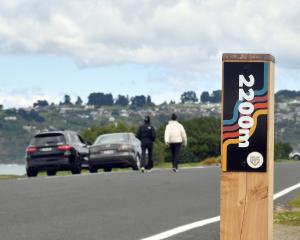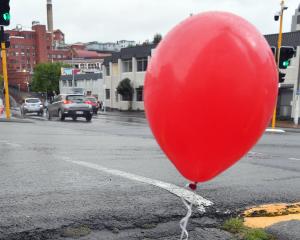
Last week, Health Minister David Clark went public over a glitch in the bowel screening pilot scheme which may have affected three people who went on to get cancer, one of whom has since died.
In the wake of this event, he called for an independent review of the national programme. Former Otago Daily Times health reporter Elspeth McLean takes a closer look at the background and some of the questions yet to be answered.
When new Health Minister David Clark was briefed on the botch-up over bowel screening invitations in early November, it was thought then it may have contributed to three deaths.
The briefing paper, tabled in Parliament last week by previous minister Jonathan Coleman, suggested the three were among eight people who missed invitations to screening who had developed cancer.

However, a later independent clinical review of the cases found that for five of the eight people (two of whom had died) bowel screening would not have altered their clinical outcomes.
For the other three, including one person who had died, it was considered earlier diagnosis was in their best interests, but it was not possible to determine if screening would have improved their prognoses.
Although the Waitemata pilot programme had been in place since 2011, the error was not picked up until last September. At that time, pilot data was being reviewed before transition to the national bowel screening programme.
Full information about the numbers of people who might have been caught up in this and the possible effect on them is still not available.
Of the more than 12,000 people dropped off the programme's list because their addresses were not up to date, 2441 were able to be identified and contacted , after the error was found, as they had since updated their National Health Index addresses.
According to the November ministerial briefing paper, there were another 10,349 people, inappropriately dropped off who had not updated their NHI addresses.
The paper described them as ''not currently affected'' by the inappropriate withdrawal, as their status had been changed to recall. That meant they would be invited to participate, should they update their addresses in the future.
Clarification of the status of the 10,349 now, how long some of them might have been waiting for invitations, and details of attempts, apart from using the National Health Index, to find accurate addresses for them, has not yet been forthcoming from the Ministry of Health. It has chosen to put questions about this through a formal Official Information Act process, which could take up to 20 working days.
In email responses to other questions, the ministry does not explain why it took so long to find this error in a pilot programme which might have been expected to be closely scrutinised at every turn.
Director of the National Screening Unit Dr Jane O'Hallahan said the address update issue was picked up and rectified because of close monitoring.
''No system is ever perfect and the ministry regrets that a number of people were impacted by this issue.''
Prospective screening participants in the Southern District Health Board area, who will be invited to join from April, could have absolute confidence in the programme, she said.
It was designed with great care and was ''being reviewed and monitored constantly as we moved towards full implementation''.
Those eligible for the programme could be confident they would be sent invitations if their current address details were held in the *National Health Index.
If an address was out of date, it was because someone had not visited say, a family doctor or a hospital, since an address change.
''That is why it is important people ensure they tell their health provider if they have changed their address.''
It is not clear why the incident was not made public some months ago.
Dr Clark said when the issue with the updating of the addresses was first discovered the priority was communicating with those affected, as it would have created unnecessary confusion and concern to talk publicly before that was completed.
That process was completed last year.
Dr Clark said it made sense to talk about the address issue as part of his review announcement.
Asked why it was not made public earlier, Dr O'Hallahan also spoke about the decision to prioritise contacting the people directly affected and the ministry's obligation to this.
''We were able to identify these people and, therefore, regarded this a contained issue.''
The 2441 people with updated addresses who did not receive invitations were also apologised to and invited for free screening.
The ministry had also taken steps to improve processes so the issue was not repeated, she said.
Screening authority associate Prof Brian Cox, who was involved with planning both the cervical and breast screening programmes in New Zealand, considers the error should have been picked up when the 60% participation target for round one of the pilot fell short.
He considers the way the participation rate was calculated in the first round of the pilot was flawed, making the 56.8% figure too high. He estimates the participation rate at 51.4%.
As a result, the estimates for participation for the national programme, which is set at 62%, and the cost-effectiveness of the programme would be wrong, he said.
The National Screening Unit has not yet responded to questions about Prof Cox's calculations.
He has some specific advice for the review.
It should establish the number of Waitemata residents 50-74 years of age identified by the 2013 census who were not invited to screening. From this, the number of uninvited people developing cancer since the programme started can be estimated, he said.
It would also need to decide whether the Ministry of Health database was adequate for the bowel screening programme invitation, whether it was updated regularly enough for invitations to be sent accurately and how it should be supplemented if its use continued.
It should also look at what the database problems were and whether current approaches to solutions would work, what the mortality from bowel cancer in those not invited was likely to be, and whether the practice of public health medicine in the pilot study was of an appropriate standard.
Reviewers would need to involve people independent of the pilot study or current screening programme with working experience of running cancer screening programmes, experienced practitioners of public health medicine applied to cancer screening programmes, those with Ministry of Health data management systems expertise, and people with experience in locating people who are hard to reach by post.
Prof Cox did not respond to a question about whether he would like to be part of the review.
It is not the first time screening invitation problems have affected participants. In 2012, the Otago Daily Times revealed a 2009 IT software fault with the breast screening programme meant 241 women had delayed invitations to routine mammograms, five of whom were found to have cancer when they finally had mammograms.
Asked what confidence the public could have in plans for the National Screening Solution (NSS), an IT system which will eventually provide for a population register for participants on all of the government screening programmes, Dr O'Hallahan said the intention was to develop a system that was fit-for-purpose and had ''functionality built-in to prevent issues like this happening again''.
The business case for the NSS is expected to be presented to Dr Clark and Minister of Finance Grant Robertson in June.
*Every person who receives healthcare in New Zealand is assigned a unique National Health Index number (NHI). Healthcare providers are responsible for updating information such as addresses.












